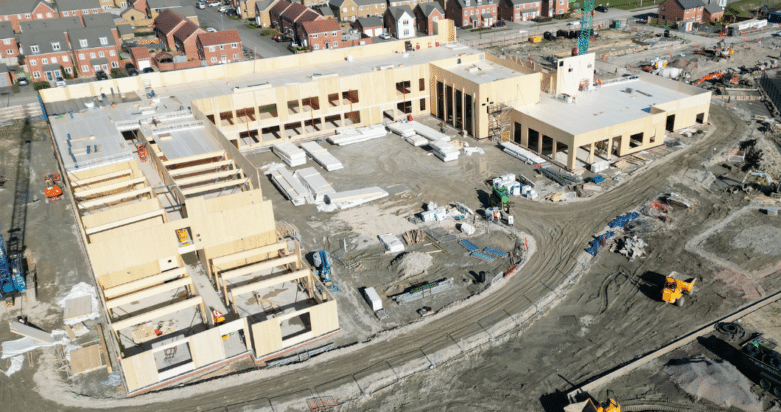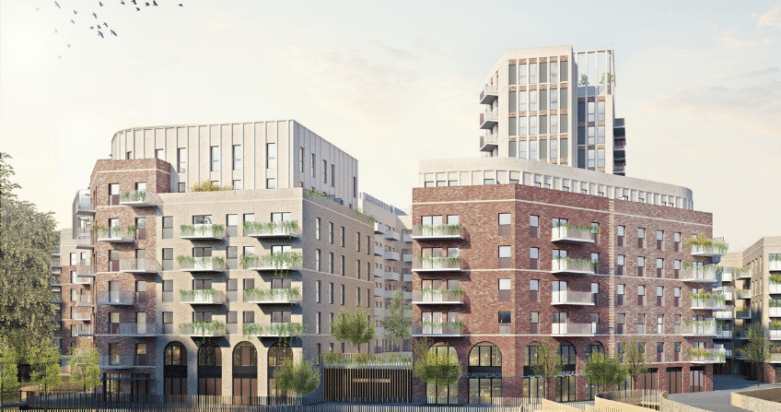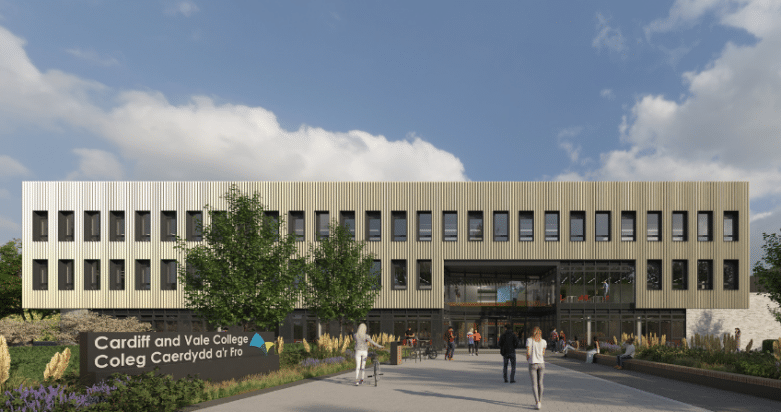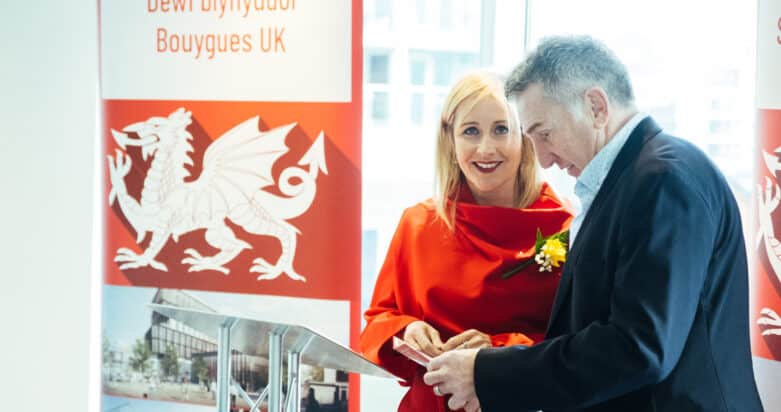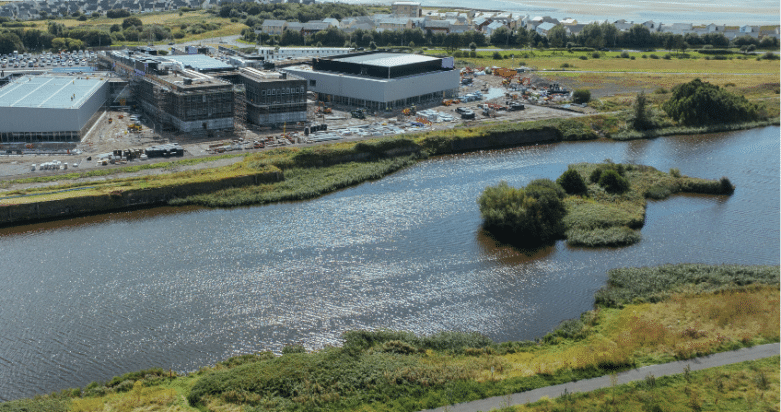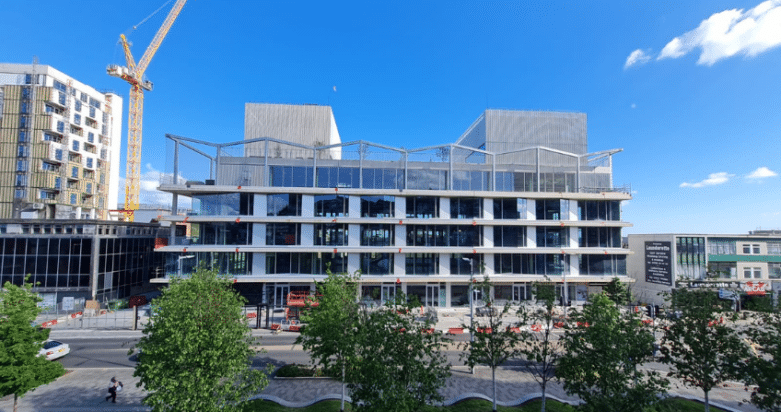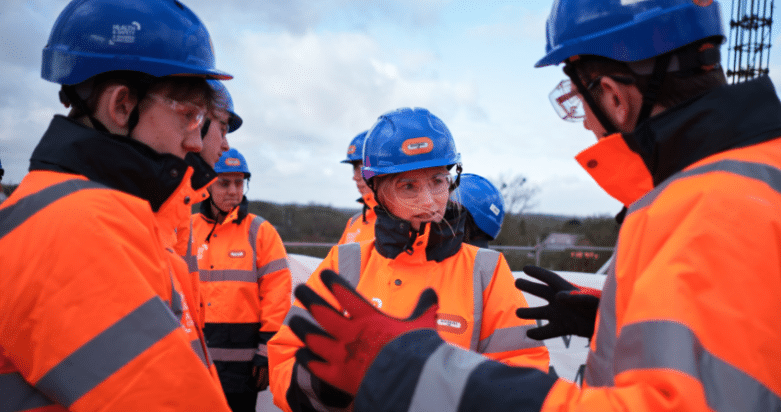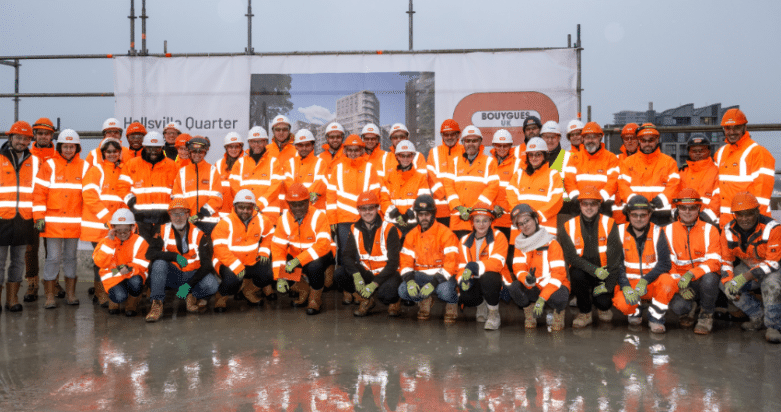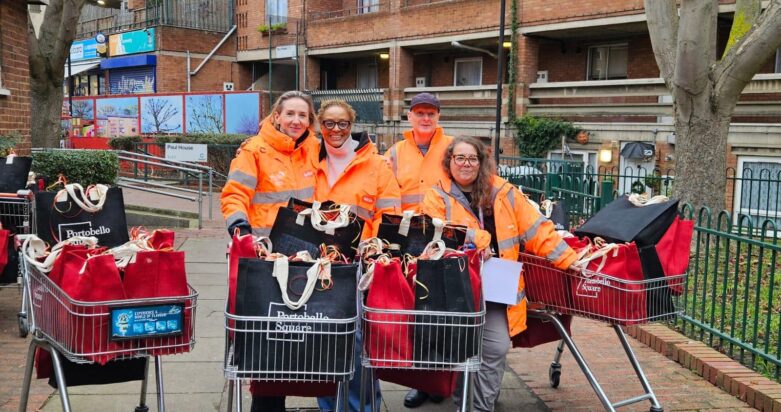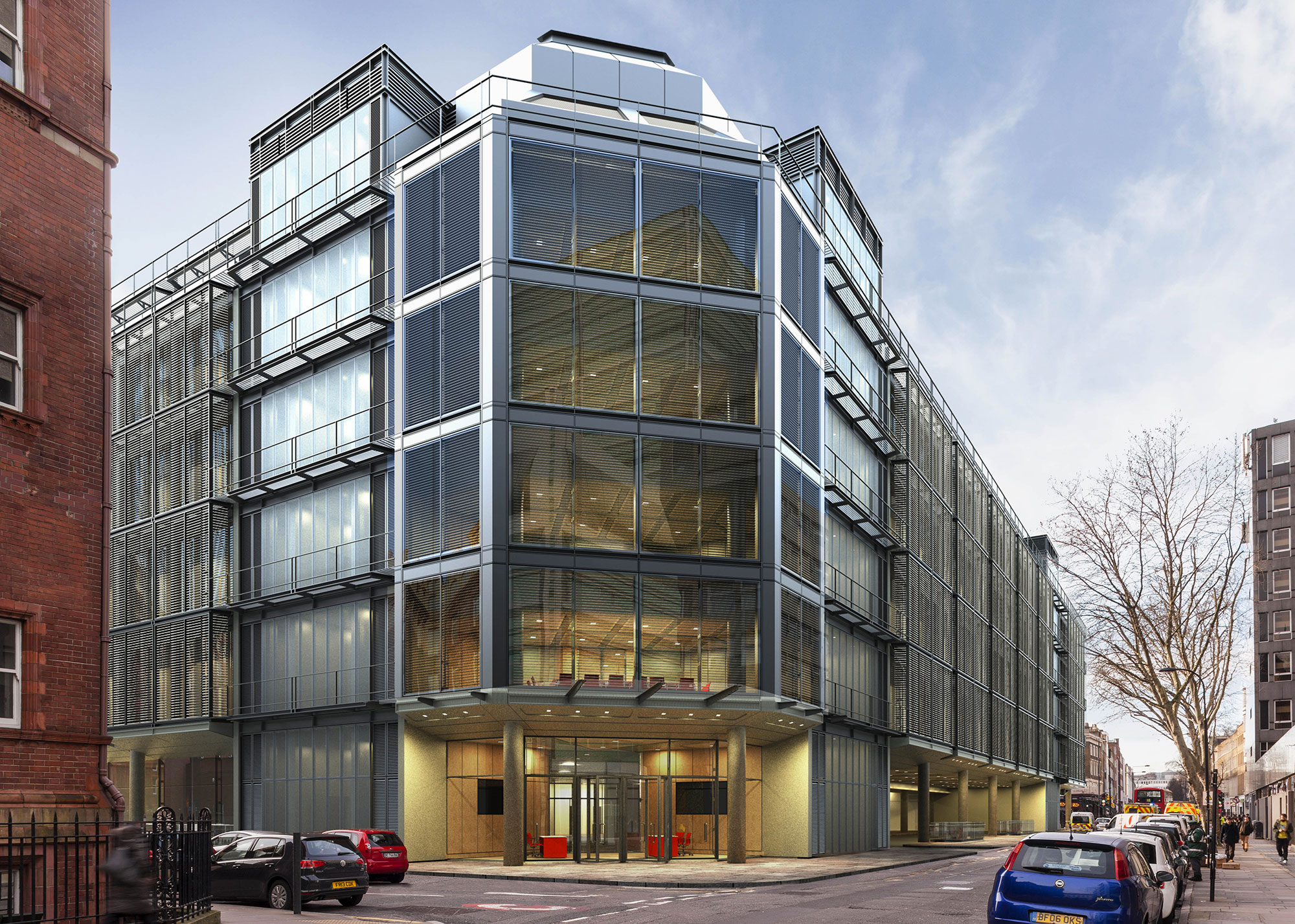
Work begins on new centre to revolutionise cancer care
A young cancer patient was the guest of honour at an event to mark the start of work on 25,000 square metres of state of the art cancer and surgical care facilities at UCLH.
Keeva Hanbury, 4, was joined by Health Secretary Jeremy Hunt and actor and blood cancer campaigner Julian Rhind-Tutt as they officially ‘broke the ground’ at the site of UCLH’s new integrated proton beam therapy (PBT) and specialist cancer and surgical treatment facility.
PBT is a specialist form of radiotherapy that targets certain cancers very precisely, increasing success rates and reducing side-effects. It targets tumours with less chance of damage to surrounding healthy tissue and is particularly appropriate for certain cancers in children who are at risk of lasting damage to organs that are still growing.
A young cancer patient was the guest of honour at an event to mark the start of work on 25,000 square metres of state of the art cancer and surgical care facilities at UCLH.
Keeva Hanbury, 4, was joined by Health Secretary Jeremy Hunt and actor and blood cancer campaigner Julian Rhind-Tutt as they officially ‘broke the ground’ at the site of UCLH’s new integrated proton beam therapy (PBT) and specialist cancer and surgical treatment facility.
PBT is a specialist form of radiotherapy that targets certain cancers very precisely, increasing success rates and reducing side-effects. It targets tumours with less chance of damage to surrounding healthy tissue and is particularly appropriate for certain cancers in children who are at risk of lasting damage to organs that are still growing.
It can be particularly effective for treating cancers in areas where the cancer has developed near a place in the body where damage could cause serious complications such as the optic nerve, the spine or the brain.
At UCLH PBT will be housed in a purpose-built centre on Grafton Way and Huntley Street, along with the largest blood disorder treatment facilities in Europe and a short stay surgery centre. Spread over nine floors, five above ground and four below, patients will start to be treated at the new centre in 2019.
The centre is being built by Bouygues UK and the PBT equipment supplied by Varian.
Currently the NHS has to send children and adults needing proton beam therapy abroad to the United States and Switzerland, but from 2018, two centres at The Christie NHS Foundation Trust in Manchester and UCLH will offer the first proton treatments in the NHS.
Keeva was treated in Jacksonville after she was diagnosed with a rare cancer, embryonal rhabdomyosarcoma, when she was just three years old. It was October last year when her mum Andrea noticed a swelling on her daughter’s leg, which doctors diagnosed after carrying out scans and blood tests in London.
“It came from nothing,” said Andrea. The treatment protocol, to include PBT, was discussed from the very start. “I thought the doctor was on drugs when she suggested we went to America for PBT,” said Andrea. “I was just getting my head around coming in for radiotherapy and injections.”
Andrea, husband Tom and Keeva’s little sister travelled to Jacksonville in March this year, and were joined by her older sister shortly afterwards. “Although we were there for a terrible reason, it was a very positive time for the family,” said Andrea, but they all felt the “massive” upheaval.
“”Having proton beam therapy available in London will be just fantastic,” said Andrea. “It will put London up there with the American centres and mean more people can benefit from PBT.”
The Government has invested £250m into building and equipping the two NHS centres with £20m set to be raised from charitable sources.
Chief executive of UCLH, Sir Robert Naylor, said: “To have work underway on this long-awaited centre is tremendous news. This will be a game-changer for Londoners and other NHS patients who will benefit from local access to advanced treatments.”
Julian Rhind-Tutt is patron of the Haematology Cancer Care charity, which raises funds for the haematology unit at UCLH. Julian said: “I’m standing on the ground where my life was saved in a noble but tired Victorian ward. Soon we’ll see in its place the largest blood disorder treatment facility in Europe.
How inspiring that so many people and organisations have come together to build this life-changing place. The most important part of any building is the people; and now the extraordinary people who work here will have a building they deserve.”
The entire project will take just over 50 months to deliver, from start to finish, and involves one of the largest excavations ever seen in the capital. A Bouygues UK spokesperson explained that advanced Building Information Modelling (BIM) and engineering were key to the complex project, which involves several simultaneous technical and operational challenges.
“Never ones to shy away from a technical challenge, we have given ourselves several here at once. Namely a mass excavation: a building where the subterranean levels go down just as deep as the structure is high above ground and all within close proximity to the Northern Line, which is around 10 metres away.
“However, that’s what makes it an even more exciting project for us and we’re very proud to be supporting the Government and UCLH to deliver what will be one of the country’s first PBT NHS treatment centres as well as a specialist cancer and surgery treatment facility for patients here in the UK.”

